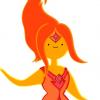Thank you guys.
Just a little background of mine to remove some of the misunderstanding - I have worked for a couple of years as a level designer in the past, at the very start of my career. I was junior since I mostly was sculpting the terrain and arranging premade assets. Also at present days I am pretty good in 3d graphics overall, I would say upper intermediate user of Maya. Long story short, I think I am familiar with general level design concepts, but I am particulary interested in how do they do the work in major titles.
Anyways, I still can't understand how do they set up the level design pipeline in AAA games.
I doubt there (WoW, Diablo III) were senior level designers who did plans only and then junior/mid guys, who did the levels themselves. Planning takes some time, sure, but not that much. Most of the time goes into building a prototype, playtesting, killing all the stuff and rebuilding. Just look at those dungeons in Diablo, most of them are no more complicated than multi-floor corridors.
Also plans are good, but they lack 3d feeling. In my opinion it is very hard to build good multi-floor level from scratch without adjusting initial plans. I find it a little non-effective if different people would work on plans and on level design itself in 3D app or an editor.
That brings me back to my question about level desigers' responsibilities.
I see that it depends on the game heavily. For example, in "Dishonored" and latest "Lara Croft" the level designers absolutely had to model stuff because of the nature of the game (like they had to measure the distance between buildings in Dishonored to predict if a player can jump between them). But how detailed was their work? Were they building 3d dummies or finished models with sculpts and normal maps and shaders.
Same goes for good old WoW and Diablo. But what did they had to do exactly.
I did some research on Blizzard web-site. In "exterior level designer" vacancy they list the following:
- Design and implement large-scale game environments.
- Work with artists and designers to create a fun and compelling experience.
- Experience creating levels in 3ds Max or other 3D level editors
- Able to create artistic, well-composed environments
But none of those things give good enough description of the job. They also have a vacancy for "Dungeon Texture Artist" and there is a point "Able to collaborate closely with a 3D level artist and create a consistent vision", that means their level desigers are also 3D level artists, but "3d level artist" is quite vague description too.
P.S. Bastion is a remarkable game. I have enjoyed every single bit of it 







